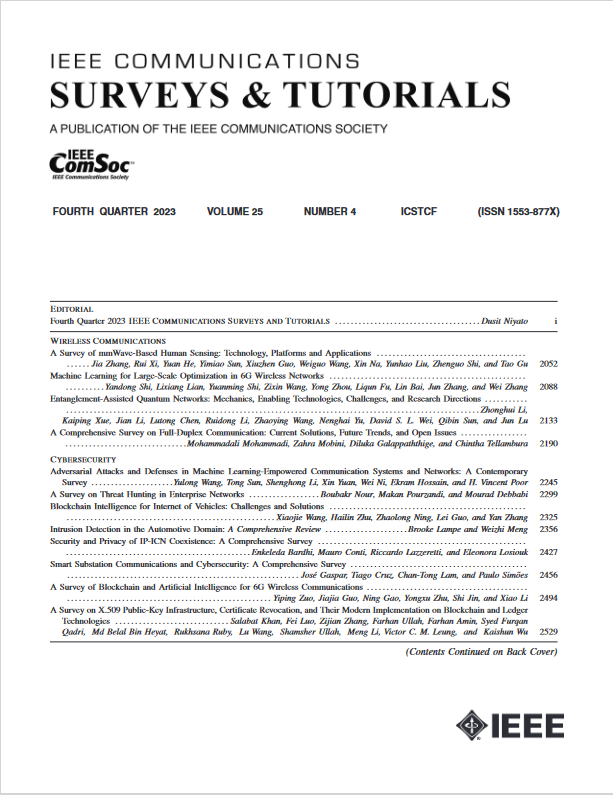走向联合大型语言模型:动机、方法和未来方向
IF 34.4
1区 计算机科学
Q1 COMPUTER SCIENCE, INFORMATION SYSTEMS
引用次数: 0
摘要
大型语言模型(llm),如LLaMA和GPT-4,已经改变了自然语言理解和生成的范式。尽管这些模型具有令人印象深刻的性能,但它们仍然面临着某些挑战,包括对大量数据的需求、高计算资源以及与其数据源相关的隐私问题。最近,联邦学习(FL)作为一种协作式人工智能方法浮出水面,它可以在保持分散数据的同时跨分布式计算实体进行人工智能训练。将FL与LLM集成为跨多个最终用户的隐私保护和协作LLM学习提供了令人鼓舞的解决方案,从而解决了上述挑战。在本文中,我们对联邦大型语言模型进行了详尽的回顾,从FL和llm的最新进展概述开始,然后讨论了它们集成的动机和挑战。然后,我们从整个生命周期的角度对现有的联合法学硕士研究进行了彻底的回顾,从预培训到微调和实际应用。此外,我们解决了这种集成所带来的威胁和问题,揭示了隐私和鲁棒性之间的微妙平衡,并介绍了增强联邦法学硕士隐私和弹性的现有方法和潜在策略。最后,我们总结了这一新兴领域未来研究的有希望的途径。本文章由计算机程序翻译,如有差异,请以英文原文为准。
Toward Federated Large Language Models: Motivations, Methods, and Future Directions
Large Language Models (LLMs), such as LLaMA and GPT-4, have transformed the paradigm of natural language comprehension and generation. Despite their impressive performance, these models still face certain challenges, including the need for extensive data, high computational resources, and privacy concerns related to their data sources. Recently, Federated Learning (FL) has surfaced as a cooperative AI methodology that enables AI training across distributed computation entities while maintaining decentralized data. Integrating FL with LLMs presents an encouraging solution for privacy-preserving and collaborative LLM learning across multiple end-users, thus addressing the aforementioned challenges. In this paper, we provide an exhaustive review of federated Large Language Models, starting from an overview of the latest progress in FL and LLMs, and proceeding to a discourse on their motivation and challenges for integration. We then conduct a thorough review of the existing federated LLM research from the perspective of the entire lifespan, from pre-training to fine-tuning and practical applications. Moreover, we address the threats and issues arising from this integration, shedding light on the delicate balance between privacy and robustness, and introduce existing approaches and potential strategies for enhancing federated LLM privacy and resilience. Finally, we conclude this survey by outlining promising avenues for future research in this emerging field.
求助全文
通过发布文献求助,成功后即可免费获取论文全文。
去求助
来源期刊

IEEE Communications Surveys and Tutorials
COMPUTER SCIENCE, INFORMATION SYSTEMS-TELECOMMUNICATIONS
CiteScore
80.20
自引率
2.50%
发文量
84
审稿时长
6 months
期刊介绍:
IEEE Communications Surveys & Tutorials is an online journal published by the IEEE Communications Society for tutorials and surveys covering all aspects of the communications field. Telecommunications technology is progressing at a rapid pace, and the IEEE Communications Society is committed to providing researchers and other professionals the information and tools to stay abreast. IEEE Communications Surveys and Tutorials focuses on integrating and adding understanding to the existing literature on communications, putting results in context. Whether searching for in-depth information about a familiar area or an introduction into a new area, IEEE Communications Surveys & Tutorials aims to be the premier source of peer-reviewed, comprehensive tutorials and surveys, and pointers to further sources. IEEE Communications Surveys & Tutorials publishes only articles exclusively written for IEEE Communications Surveys & Tutorials and go through a rigorous review process before their publication in the quarterly issues.
A tutorial article in the IEEE Communications Surveys & Tutorials should be designed to help the reader to become familiar with and learn something specific about a chosen topic. In contrast, the term survey, as applied here, is defined to mean a survey of the literature. A survey article in IEEE Communications Surveys & Tutorials should provide a comprehensive review of developments in a selected area, covering its development from its inception to its current state and beyond, and illustrating its development through liberal citations from the literature. Both tutorials and surveys should be tutorial in nature and should be written in a style comprehensible to readers outside the specialty of the article.
 求助内容:
求助内容: 应助结果提醒方式:
应助结果提醒方式:


